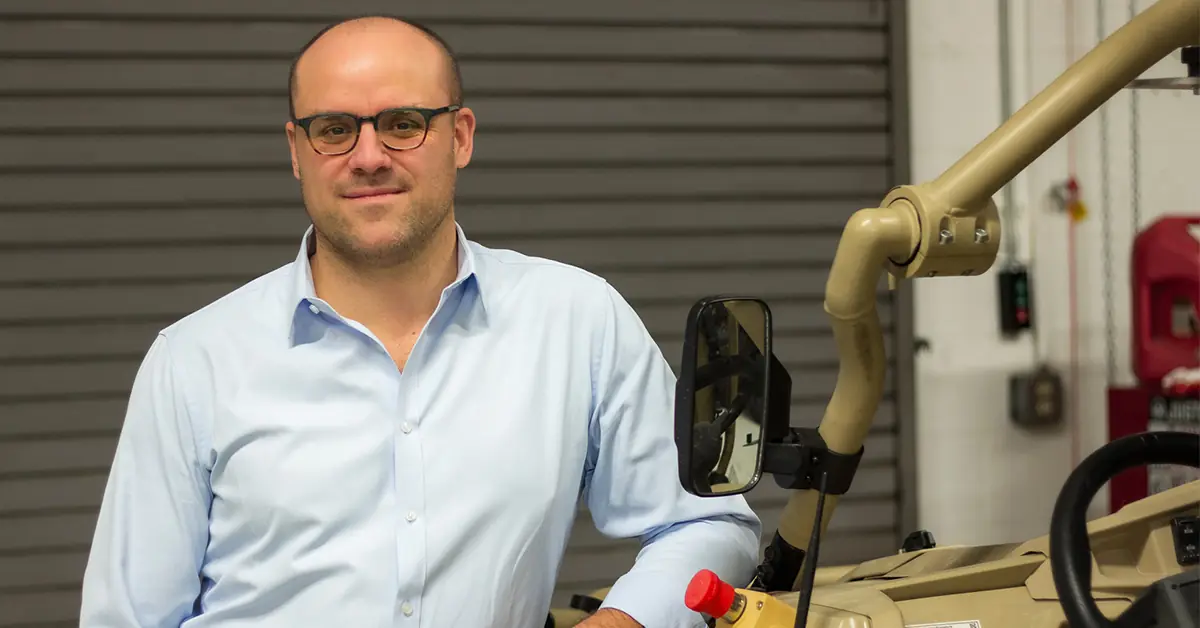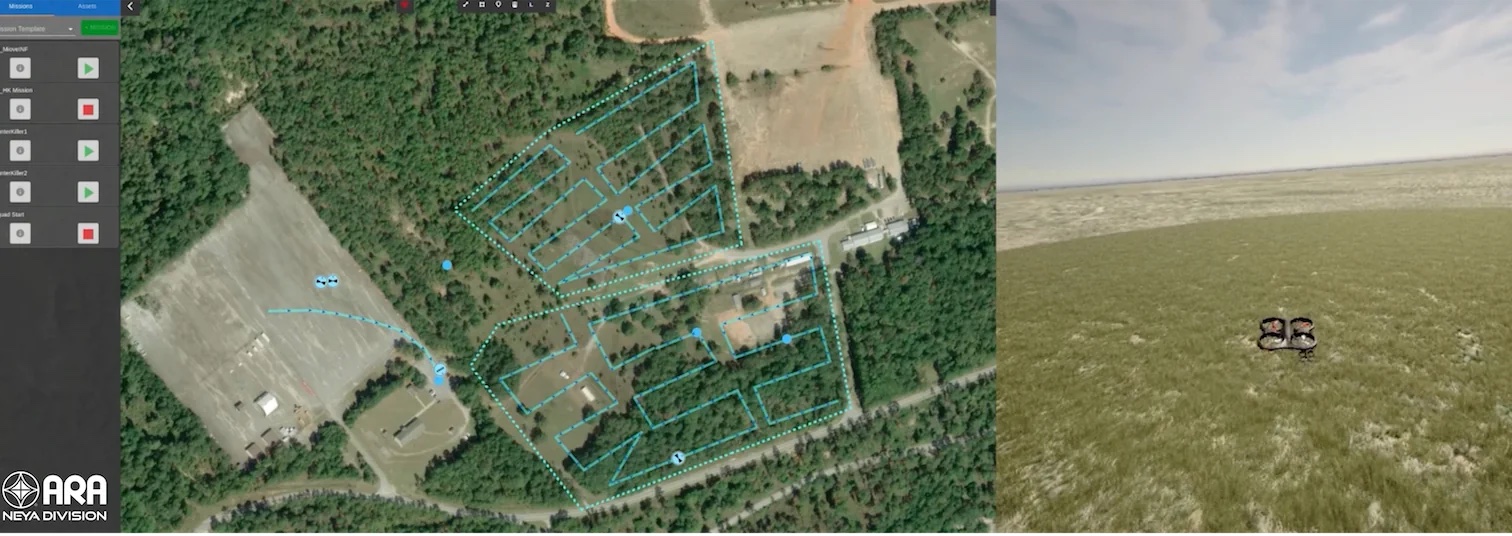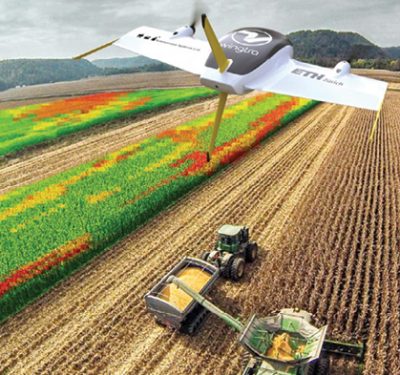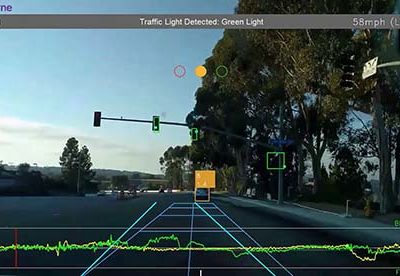As the autonomous vehicle industry moves into its second decade of mainstream development, much of the focus remains on on-road navigation—urban shuttles, robo-taxis and highway driving. But beyond the roadway lies a far more complex challenge: true autonomy in the unpredictable, unstructured environments of off-road terrain.

That’s where Neya Systems, a division of Applied Research Associates, has been building one of the most advanced autonomy stacks in the world.
At the heart of this effort is N-Drive, Neya’s multi-domain, vehicle-agnostic autonomy software stack designed specifically for rugged ground environments. “Everybody’s focusing on what I call reconnaissance, which is just following waypoints, avoiding obstacles and off-road terrain. We do that, but we also cover applications like construction and route clearance,” said Kurt Bruck, division manager and vice president of Neya Systems, in an interview with Inside Unmanned Systems. “We have a number of different planners that allow vehicles to do autonomous dig-dump cycles—digging holes in the earth, moving the pile of dirt to another location, managing that pile—as well as reconnaissance, combat and convoying.”

A DECADE IN THE MAKING—FROM DOD TO MINING AND BACK
Though N-Drive is now gaining attention as a versatile autonomy platform, its development has spanned more than a decade and multiple industries. “It actually, believe it or not, has gone back and forth,” Bruck explained. “It originally was a DoD application, and then we got into commercial mining. We started to bridge the gap between DoD into mining.”
That bridge became a proving ground. In the rugged, remote zones of Western Australia—where logistics are harsh, safety is paramount and mining equipment is immense—Neya matured the N-Drive system to support full 24/7 autonomous operations. “We have trucks now operating 24 hours a day in Western Australia using N-Drive,” Bruck noted. “And now we’re bringing that back to DoD—kind of like the lessons learned from mining. So it’s gone full circle.”
CRACKING THE CODE WITH HIGH-FIDELITY SIMULATION
The wild unpredictability of off-road terrain poses a daunting challenge for autonomous systems, especially compared to structured road environments. “That’s one of the dirty secrets of off-road versus on-road,” Bruck noted. “On-road, all stop signs look pretty much the same. All traffic lights look pretty much the same. So you can predict all these things. But off-road isn’t that way. There’s always some fern, some tree you didn’t expect.”
Most companies respond by deploying their systems physically into environments to gather training data. Neya took a different approach. “About six years ago, we invested heavily in simulation tools,” Bruck said. The result is their Virtual Integration Simulation Environment (VISE), a high-fidelity physics model specifically designed for off-road autonomy, built on Unreal Engine and augmented with what Bruck calls “our own secret sauce.”
That secret sauce includes vegetation-aware LiDAR models, terrain variability and dynamic environmental conditions. “We can launch a vehicle of any type and have it run thousands of runs. The environment constantly changes through every run,” he explained. “Then you get feedback as to where the vehicle failed the most—and we can target those areas.”
Using Monte Carlo analysis and synthetic training, Neya can simulate thousands of missions faster than real time, letting them identify, isolate and address the root causes of system failure. “Let’s say oak trees are your kryptonite,” Bruck said. “You wouldn’t know unless you could run thousands of runs. If you’re doing that on physical vehicles all the time, you may never uncover that failure mode.”

ONE STACK, MANY PLATFORMS
N-Drive is vehicle-agnostic, a feature that has proven crucial across the vastly different demands of defense and commercial mining. “Some of them are tracked, some of them are wheeled, some of them have more wheels than others. Some are larger. Mining trucks are basically buildings on wheels.”
To account for these variances, VISE is used not only to train the autonomy stack, but also to develop and validate kinematically accurate vehicle models. “We could import those into our simulation, run them through different environments, and get a sense—much quicker than almost anybody else—as to how our autonomy is performing.”
Neya also adheres to the Modular Open Systems Approach (MOSA), supporting standards such as IOP and JAWS for seamless integration between autonomy kits and vehicle control systems. “We implement open standard interfaces…over the link messages with ATAC and other mission planner suites,” Bruck said.
FROM WAYPOINTS TO AI-DRIVEN AUTONOMY
Autonomous vehicles have long relied on waypoint-following as the fundamental behavior, but Bruck believes that’s not enough—especially in uncertain terrain. “Most of our competitors’ vehicles require what’s called human interventions,” he explained. “The infinite permutations of the off-road environment are so hard to predict that most vehicles are going to get stuck in some situation and then require an operator to jump in with a joystick.”
Neya’s solution: eliminate the need for human fallback entirely. “In my opinion, what’s the point of having an autonomous vehicle if you need a human in the loop? It defeats the entire purpose.”
Instead, Neya’s AI reasoning module is trained to recognize when it’s stuck and automatically decide how to resolve the issue. “If I’m stuck in a dense canopy and there’s a boulder on my left, no way I’m going to fit through this tree line, what do I do? The vehicle will decide—maybe back up a few waypoints and try a different path.”
These behaviors are refined through synthetic training. “Using simulation, we can run thousands and thousands of runs every day and just keep tweaking it until we get the escape behaviors just right,” Bruck said. “That was our strategy—to really focus and solve that problem like nobody else has before.”
SCALING AUTONOMY: MISSION PLANNING AND FLEET MANAGEMENT
The promise of autonomy isn’t just about individual vehicles navigating rugged terrain—it’s about coordinated operations. “There are really two key problems that the DoD has been trying to solve,” Bruck explained. “One is protection—getting the soldier out of harm’s way. That’s been No. 1. But the other one is force multiplication.”
Neya’s mission planning software addresses this second challenge, enabling single-operator control over entire fleets of autonomous systems. “We have the whole software that coordinates the behaviors so they can execute appropriately,” Bruck said. “If you have 100 autonomous vehicles and need them to do something intelligent—that’s what we’re building.”
LOCKING IT DOWN: CYBERSECURITY AS A MISSION ENABLER
Autonomy at scale isn’t viable without robust cybersecurity. “We started to realize that cybersecurity is a concern right now, and everybody wanted to protect their vehicles, but didn’t have a methodology for doing that,” Bruck said.
While AUVSI had created a cybersecurity certification framework for drones, nothing comparable existed for ground systems—until now. “We partnered with AUVSI. We said, hey, we’ve got cyber experts on our team. Why don’t we start to define the cyber standard for the ground domain?”
The result: a NIST-defined cybersecurity framework specifically tailored for unmanned ground systems, to be launched as part of a new certification initiative at AUVSI XPONENTIAL in May.
“We’ve implemented a secure IOP and JAWS layer between the operating control units and the ground vehicles. We’ve also implemented something called an intelligent cyber agent that will actually adjust its cyber posture based on the attacks,” Bruck said. “If I’m getting this kind of attack, go to contingency point B and wait for help. That’s also built into the standard.”
The framework includes intrusion protections across autonomy and drive-by-wire kits, as well as secure vehicle-to-vehicle and vehicle-to-command communications.
THE ROAD AHEAD: PAIRING AUTONOMY WITH GENERATIVE AI
As autonomy matures, Neya is now looking at the next leap: combining N-Drive with generative AI and large language models (LLMs). “There’s really strong applications for the application of autonomous vehicles,” Bruck said. “Pairing our stack with a generative AI model that reasons about its environment—that’s the future.”
The idea is to shift from reactive autonomy to semantically aware autonomy—systems that not only perceive but also interpret and plan based on complex environmental understanding. “An example would be: the vehicle is also observing its environment and reports back that, hey, there are 16 enemies on the other side of that post office building. They have AK-47s. We’re going to change our waypoint plan to go to the left side of the building instead.”
It’s a bold vision, but one that Neya is already investing in.
AN OFF-ROAD FUTURE, BUILT TODAY
With more than a decade of focused development, a modular and simulation-powered autonomy stack, a new cybersecurity standard and a vision that includes LLM-enhanced reasoning, Neya Robotics is positioning N-Drive as a cornerstone technology in the future of autonomous ground systems.
Whether in the remote desert of Western Australia or the forward edges of the battlefield, Neya is building vehicles that don’t just follow orders—they think.






